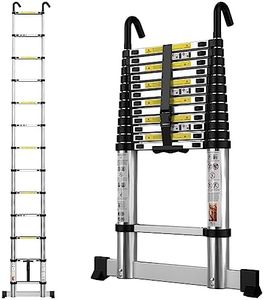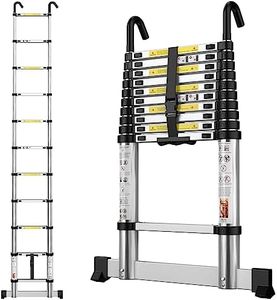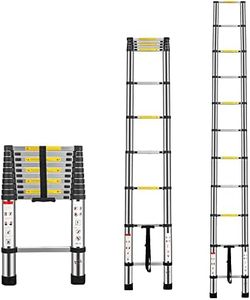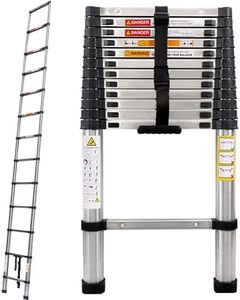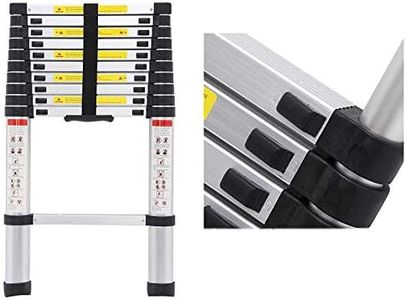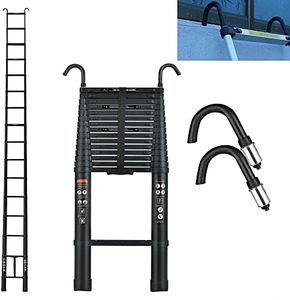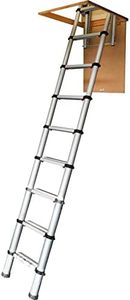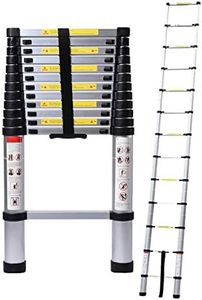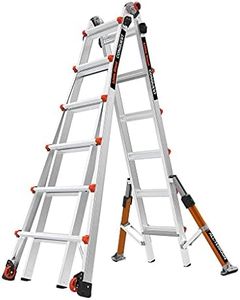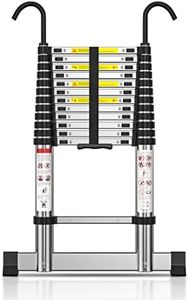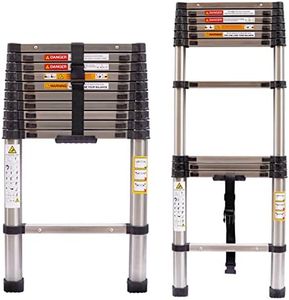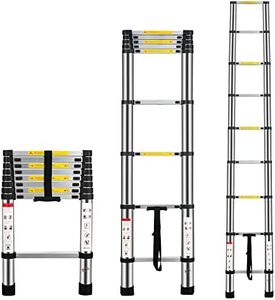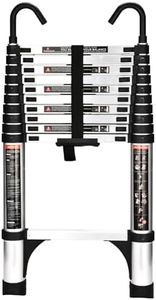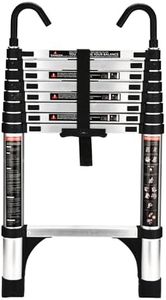We Use CookiesWe use cookies to enhance the security, performance,
functionality and for analytical and promotional activities. By continuing to browse this site you
are agreeing to our privacy policy
10 Best Telescopic Ladders
From leading brands and best sellers available on the web.Buying Guide for the Best Telescopic Ladders
When choosing a telescopic ladder, it's important to consider the specific tasks you plan to use it for, as well as the environment in which you'll be working. Telescopic ladders are versatile and convenient because they can be extended to various lengths and are easy to store. However, selecting the right one involves understanding key specifications that affect safety, usability, and durability. By focusing on these specifications, you can ensure that the ladder you choose will meet your needs effectively and safely.Maximum HeightThe maximum height of a telescopic ladder is the full length it can extend to. This is crucial because it determines how high you can safely reach. If you need to access high places like rooftops or tall shelves, a ladder with a greater maximum height is necessary. Ladders typically range from about 8 to 16 feet. Consider the highest point you need to reach and choose a ladder that extends slightly beyond that to ensure stability and safety.
Load CapacityLoad capacity refers to the maximum weight the ladder can safely support, including the user and any tools or materials being carried. This is important for safety reasons, as exceeding the load capacity can lead to accidents. Most telescopic ladders have a load capacity of around 250 to 330 pounds. Choose a ladder with a load capacity that comfortably exceeds your weight plus any additional load you might carry while using the ladder.
MaterialTelescopic ladders are typically made from aluminum or fiberglass. Aluminum is lightweight and resistant to rust, making it ideal for general use and easy transport. Fiberglass is heavier but offers better electrical resistance, which is important if you are working near power lines. Consider the environment and specific tasks you will be performing to decide which material is best for you.
PortabilityPortability refers to how easy it is to transport and store the ladder. Telescopic ladders are designed to be compact and easy to carry, but they vary in weight and collapsed size. If you need to move the ladder frequently or have limited storage space, look for a model that is lightweight and has a small collapsed size. This will make it easier to handle and store when not in use.
Safety FeaturesSafety features on telescopic ladders can include locking mechanisms, non-slip feet, and stabilizer bars. These features are important to prevent accidents and ensure stability while using the ladder. Locking mechanisms keep the ladder securely in place at the desired height, while non-slip feet and stabilizer bars provide additional support. Evaluate the safety features of a ladder to ensure it meets your safety requirements, especially if you will be using it on uneven or slippery surfaces.
